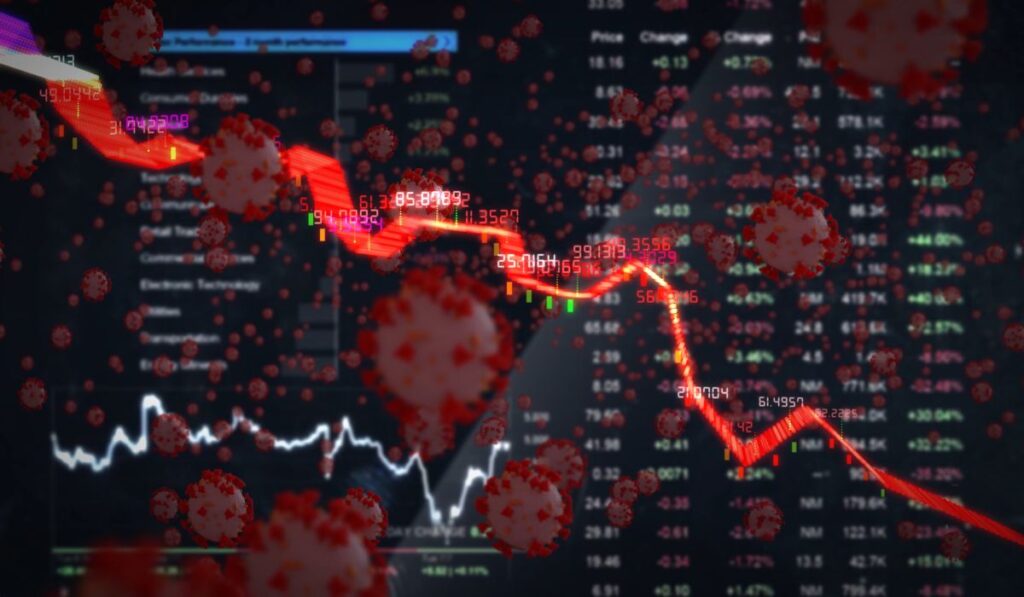The recent tumultuous downturn in the stock market has left investors reeling, with significant losses incurred across various sectors. On March 14, the benchmark indices experienced a sharp decline, triggering panic selling and leading to over 1,100 stocks hitting the lower circuit. Let’s delve into the details of this stock market crash and its ramifications.
Extent of Decline
According to data from the Bombay Stock Exchange (BSE), out of the 3,976 stocks that traded, a staggering 88 percent, totaling 3,512 stocks, witnessed a decline. This widespread downturn underscores the severity of the market correction, with only 404 stocks managing to advance amidst the turmoil.
Benchmark Indices Performance
The benchmark indices, the Sensex and the Nifty, both registered significant losses. The Sensex plummeted by 1.2 percent, closing below the critical 73,000 mark at 72,762. Similarly, the Nifty ended below the 22,000 mark, down 1.5 percent to settle at 21,998. This sharp decline reflects the broad-based nature of the sell-off, which impacted large-cap, mid-cap, and small-cap stocks.
Top Nifty Losers
Among the notable losers in the Nifty index were Adani Ports, Coal India, and Power Grid Corporation, each experiencing losses exceeding 7 percent. These prominent stocks bore the brunt of the market downturn, dragging down the overall performance of the index.
Midcap and SmallCap Indices Plunge
The Nifty Midcap 100 and Nifty SmallCap 100 indices witnessed steep declines of 4.4 percent and 5.3 percent, respectively. These indices, which typically represent smaller companies, were particularly hard hit during the market crash, reflecting the broader sentiment of risk aversion among investors.
Foreign vs. Domestic Investors
Foreign Portfolio Investors (FPIs) offloaded shares worth ₹4,595 crore during the market turmoil, exacerbating the selling pressure. In contrast, domestic institutions seized the opportunity to buy, acquiring shares worth ₹9,093 crore. This divergence in investment behavior highlights the contrasting strategies adopted by foreign and domestic investors during times of market distress.
Global Context
While the stock market crash primarily affected domestic markets, global shares experienced mixed performance. The optimism stemming from a record rally on Wall Street waned, with markets awaiting crucial economic data and guidance from the US Federal Reserve regarding its rate-cut path. Amidst this uncertainty, Asian markets exhibited varied reactions, with the Straits Times index registering notable gains.
Adani Group’s Rollercoaster Ride
The Adani Group, a prominent conglomerate in India, witnessed a rollercoaster ride in the wake of the market crash. Following substantial losses in market capitalization on the previous trading day, Adani shares staged a remarkable recovery, with ten listed Adani group stocks rallying up to 7 percent. This resurgence added nearly ₹57,000 crore to the group’s market capitalization, underscoring the volatile nature of the market.
Expert Insights

Analysts from Kotak Equities cautioned investors about the risks associated with small-cap and mid-cap stocks, emphasizing the potential for further downside. They highlighted the vulnerability of low-quality stocks, which may face continued pressure amid market uncertainty. Identifying specific stocks trading at expensive valuations, they urged investors to exercise caution and prioritize quality over speculative investments.
Conclusion
In conclusion, the recent stock market crash has reverberated across the financial landscape, leaving investors grappling with losses and uncertainty. While the market may exhibit resilience in the face of adversity, prudent risk management and a discerning investment approach remain paramount in navigating volatile market conditions.
Frequently Asked Questions (FAQs)
What led to the stock market crash on March 14?
The stock market crash on March 14 was triggered by a combination of factors, including concerns over rising inflation, geopolitical tensions, and profit-taking after a prolonged period of bullish momentum. Additionally, uncertainties surrounding the trajectory of interest rates and economic growth contributed to investor anxiety, prompting a widespread sell-off across equities.
How did individual stocks fare during the market crash?
Individual stock performance varied during the market crash, with some stocks experiencing substantial losses while others managed to weather the storm. Prominent losers included Adani Ports, Coal India, and Power Grid Corporation, each witnessing declines exceeding 7 percent. Conversely, certain stocks within the Adani Group staged a remarkable recovery, rallying up to 7 percent amidst the market turmoil.
What impact did the market crash have on mid-cap and small-cap indices?
The market crash had a significant impact on mid-cap and small-cap indices, with both the Nifty Midcap 100 and Nifty SmallCap 100 witnessing steep declines of 4.4 percent and 5.3 percent, respectively. These indices, which represent smaller companies, were particularly vulnerable during the sell-off, reflecting heightened investor risk aversion.
How did foreign and domestic investors react during the market crash?
Foreign Portfolio Investors (FPIs) offloaded shares worth ₹4,595 crore during the market turmoil, exacerbating the selling pressure. In contrast, domestic institutions seized the opportunity to buy, acquiring shares worth ₹9,093 crore. This divergence in investment behavior underscores the differing strategies adopted by foreign and domestic investors during times of market distress.
What precautions should investors take amidst market volatility?
Amidst market volatility, investors should prioritize risk management and adopt a disciplined investment approach. Diversification across asset classes and sectors can help mitigate risk, while thorough research and analysis can aid in identifying fundamentally strong stocks. Additionally, maintaining a long-term perspective and avoiding reactionary trading can help navigate turbulent market conditions with greater confidence.
How did global markets react to the Indian stock market crash?
While the Indian stock market crash primarily affected domestic markets, global shares experienced mixed performance. Optimism stemming from a record rally on Wall Street waned, with markets awaiting crucial economic data and guidance from the US Federal Reserve regarding its rate-cut path. Amidst this uncertainty, Asian markets exhibited varied reactions, with the Straits Times index registering notable gains.








